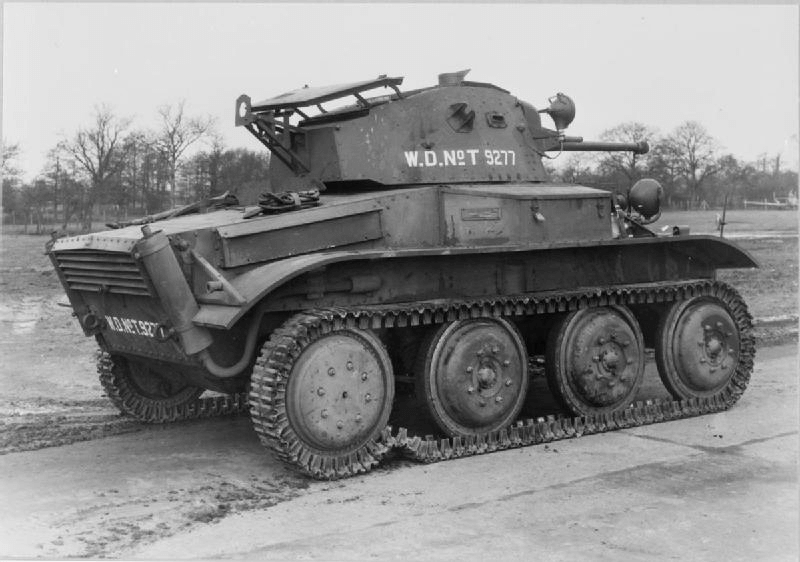
| Year | November 1940 |
| Vehicle Type | Light Tank |
| Origin & Designer | Britain/Metro-Cammell |
| Numbers Produced | 177 |
| Crew | 3 (Commander, Gunner & Driver) |
| Main Armament | 1 x OQF 2 pdr L/50 Mk. IX Gun |
| Main Armament | [@sponson_traverse] |
| Elevation | -10° to +25° |
| Turret Traverse | 360° (Manual) |
| Gun Traverse | [@gun_traverse] |
| Gun Mount | [@gun_mounts] |
| Maximum Range | [@maximum_range] |
| Armour Penetration | [@armour_penetration] |
| Gun Sight | [@gun_sight] |
| Secondary Armament | 1 x 7.92mm Besa Machine Gun (Coaxial) |
| Smoke Discharger | 2 x 4in Smoke Mortars |
| Ammunition Carried | 50 x 40mm & 2025 x 7.92mm Rounds |
| Height | 2.12m |
| Width | 2.31m |
| Length | 4.11m |
| Combat Weight | 7.620 kg |
| Ground Clearance | 0.24m |
| Fording Depth | 0.91m |
| Trench Crossing | 1.52m |
| Obstacle Clearance | 0.50m |
| Climbing Ability | 30° |
| Radio | No. 19 Set |
| Armour | Hull Front: 16mm. Hull Sides: 16mm. Hull Rear: 14mm. Hull Top: 8mm. Hull Bottom: 4mm. Gun Mantle: 16mm. Turret Front: 16mm. Turret Sides: 16mm. Turret Rear: 14mm. Turret Top: 8mm. |
| Engine | Meadows MAT (Petrol) |
| Transmission | 5 Forward & 1 Reverse |
| Maximum Road Range | 225 km |
| Maximum Cross Country Range | [@maximum_cross_country_range] |
| Maximum Water Range | [@maximum_water_range] |
| Maximum Road Speed | 64 kph |
| Maximum Cross Country Speed | 45 kph |
| Maximum Water Speed | [@maximum_water_speed] |
| Variants | [@variants] |
| Notes | The Tetrarch was another light tank designed by Vickers-Armstrong and produced by Metro-Cammell. The British army wanted a light tank that could carry a gun rather than a machine and the A17 got the go ahead. Production was slow due to priority going to cruisers and Infantry tanks. The army were well aware that light tanks fared badly when used in combat against other tanks. This along with the cooling problems that plagued the Tetrarch in high temperatures made them surplus to requirement. The tank was saved when the decision was made to develop a glider borne tank. The airborne arm was beginning to be formed and by 1941 they were selecting weapons to equip them in glider and parachute operations. In 1944 Test were made to develop the Hamilcar glider to carry the Tetrarch and these proved successful. The number of Tetrarchs in service was low, mainly due to twenty being supplied to Russia and more were lost during the invasion of Madagascar, so only fifty Tetrarchs were available to the Airborne. The glider borne Tetrarch’s were used in action on D-Day and were useful in a reconnaissance role. By the end of 1944 they were replaced the US designed M22 Locust. |